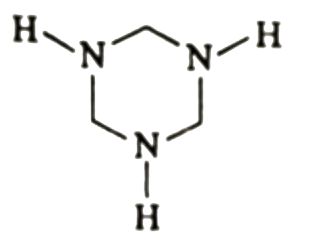An halokane is made to treat with excess of alcholic ammonia to give mainly
A
1∘ amine
B
2∘ amine
C
1∘,2∘and3∘ amines
D
mixture of 1∘,2∘,3∘ amines and quaternary ammonium salt
Text Solution
The correct Answer is:A
Excess NH3 reacts with all haloakanes to form 1∘ amines. 1∘ amiens cannot further react with haloakane (already exhausted).
|
Topper's Solved these Questions
- GENERAL PRINCIPLES & PROCESSES OF ISOLATION OF ELEMENTSBOOK - NIKITA PUBLICATIONCHAPTER - GENERAL PRINCIPLES & PROCESSES OF ISOLATION OF ELEMENTSEXERCISE - Multiple choice questions
117 Videos
- MCQs FROM PREVIOUS BOARD QUESTION PAPERS BOOK - NIKITA PUBLICATIONCHAPTER - MCQs FROM PREVIOUS BOARD QUESTION PAPERS EXERCISE - Question Paper- MHT-CET 2018
50 Videos
Similar Questions
Knowledge Check
An haloalkane is made to react with excess of alcoholic ammonia to give mainly
A1∘ amineBmixture of 1∘,2∘,3∘ aminesCmicture of 1∘and3∘ aminesDmixture of 1∘,2∘,3∘ amines and quarternary ammonium saltsAmmonia reacts with excess of chlorine to give
ANH4ClBCl2CNCl3DNCl5Formaldehyde reacts with excess of ammonia to give
ACH2=NHB C
C DHexamethylenetetramine
DHexamethylenetetramine
Ethyl iodide reacts with excess ammonia to give
View SolutionChloromethane on treatment with excess of ammonia yields mainly
View SolutionChloromethane on treatment with excess of ammonia yields mainly
View SolutionChloromethane on treatment with excess of ammonia yields mainly
View SolutionChloromethane on treatment with excess of ammonia yields mainly
View Solution
